Orthopaedic Neurology Diagnostic Guide to Neurological Levels Motor
















































































































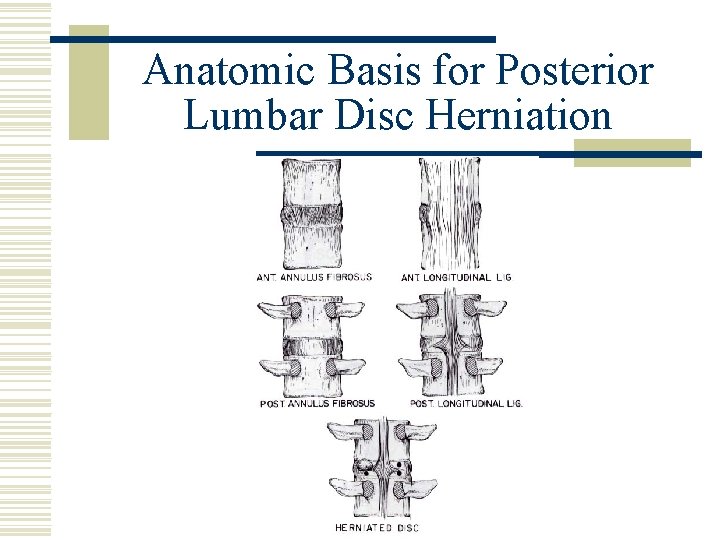

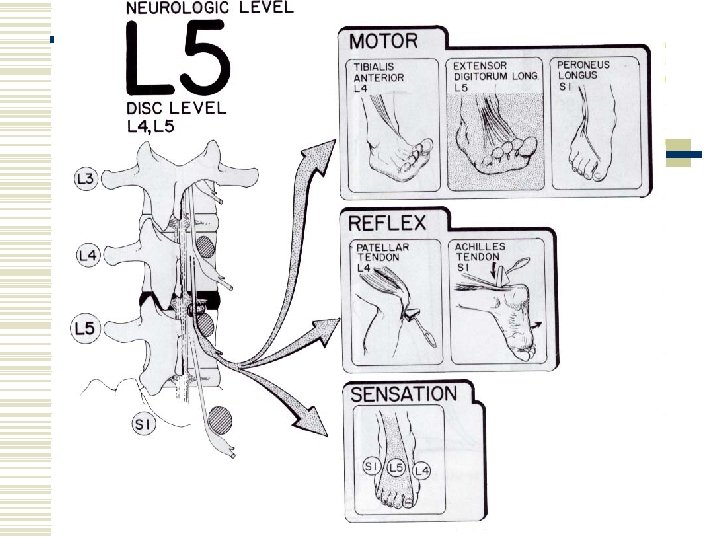
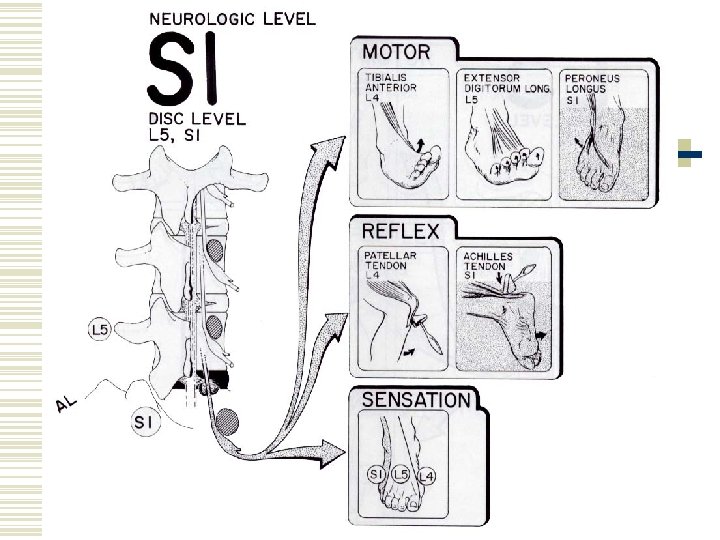
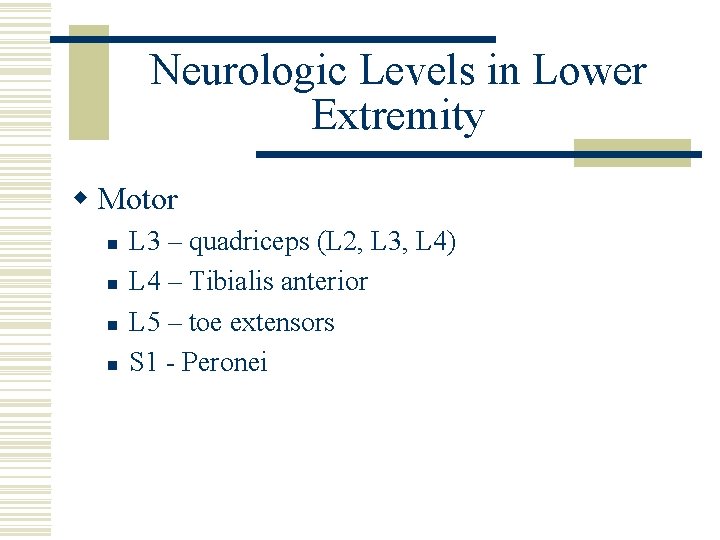
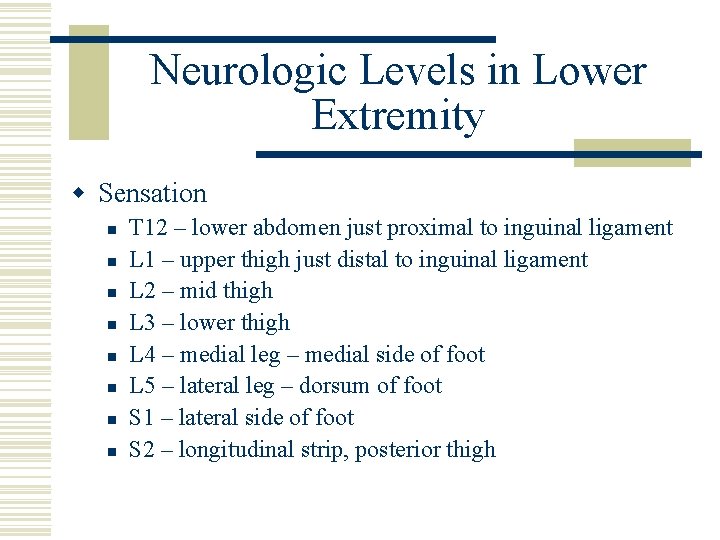
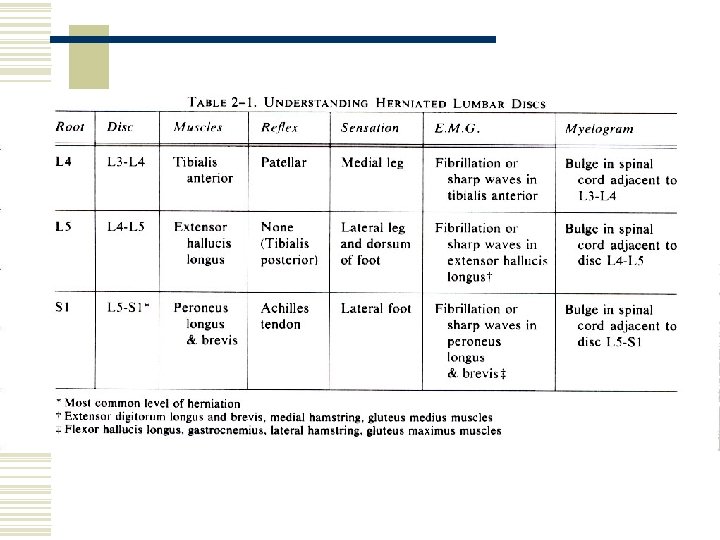
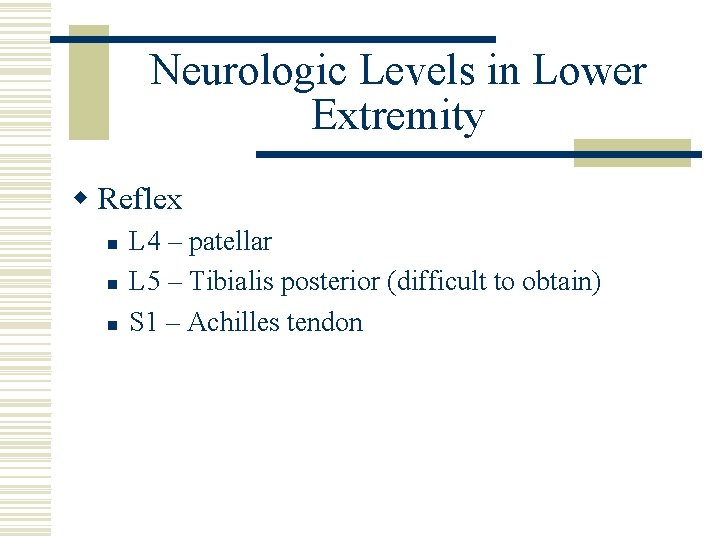
- Slides: 120

Orthopaedic Neurology Diagnostic Guide to Neurological Levels

Motor Power w Interruption of the nerve root causes denervation and paralysis of its myotome. w Pressure on a nerve root can cause a decrease in muscle strength. w Muscle testing is utilized to evaluate whether or not a lesion is present and to what degree it is effecting the muscle strength.

Muscle Grading Chart w Muscle gradations w Description. n 5 – normal n n 4 – good n n 3 – fair n n 2 – poor n n 1 – trace n n 0 - zero n Complete range of motion against gravity with full resistance. Complete range of motion against gravity with some resistance. Complete range of motion against gravity. Complete range of motion with gravity eliminated. Evidence of slight contractility. No joint motion. No evidence of contractility.

Sensation w Pathology to the cord or nerve root results in loss of light touch, followed by loss of sensation of pain. w During recovery from nerve root injury, sensation of pain returns before light touch.

Sensation w The 2 sensations are tested separately, light touch with a cotton swab, pain with pinpricks. w Pinwheels can be utilized to evaluate sensation. w Results can be recorded on a dermatome chart as normal, hyperesthetic (increased), hyposthetic (decreased), dyesthetic (altered), or anesthetic (absent).

Reflex w Interruption in the basic reflex arc results in the loss of reflex, while pressures on the nerve root itself may decrease its intensity (hyporeflexia). w Interruption of the upper motor neuron’s regulatory control results in a hyperactive nerve (hyperreflexia). w Reflexes should be reported as normal, increased, or decreased utilizing bilateral comparison.

Stretch Reflex Arc

Nerve Root Lesions by Neurologic Level

Evaluation of Nerve Root Lesions Upper Extremity

Cervical Spine w C 5 is the 1 st significant contribution to the brachial plexus. w C 1 -4 are difficult to test; However, C 4 is the major innervation to the diaphragm (via the phrenic nerve).

The Cervical Spine



Deltoid & Supraspinatous

Elbow Flexion and Extension

Biceps Brachii & Brachialis

Functions of the Biceps

Muscle Test for the Biceps

Biceps Reflex Test

Memory Trick

Muscle Test Shoulder Abduction

Sensory Distribution C 5


Wrist Extension and Flexion

Extensor Carpi Ulnaris (Left), Extensor Carpi Radialis (Right)

Muscle Test Wrist Extension

Brachioradialis Reflex Test

Memory Trick


Triceps Brachii

Walking With a Crutch Utilizes the Triceps Muscle

Muscle Test Wrist Flexors

Flexor Carpi Radialis (Left), Flexor Carpi Ulnaris (Right)

Finger Extension and Flexion

Extensor Digitorum

Muscle Test Finger Extension

Triceps Reflex Test


Flexor Digitorum Superficialis (Left), and Profundus (Right)

Lumbricales

Muscle Test Finger Flexors

Memory Trick


Finger Abduction and Adduction

Muscle Test Finger Abduction

Muscle Test Finger Adduction

Summary of Muscle Testing for the Upper Extremity

Summary of Reflex Testing for the Upper Extremity

Summary of Sensation for the Upper Extremity

Cervical Vertebrae and Nerve Roots

Herniated Cervical Disc

Occiput & C 1 Articulation

C 1 and C 2 Articulation

Anatomic Basis for Posterior Cervical Disc Herniation






Neurologic Levels in Upper Extremity w Motor n n n C 5 – shoulder abduction C 6 – wrist extension C 7 – wrist flexion and finger extension C 8 – finger flexion T 1 – finger abduction, adduction

Neurologic Levels in Upper Extremity w Sensation n n n C 5 – lateral arm C 6 – lateral forearm, thumb, and index finger C 7 – middle finger (variable) C 8 – medial forearm, ring, and small finger T 1 – medial arm T 2 - Axilla

Neurologic Levels in Upper Extremity w Reflex n n n C 5 – biceps C 6 – Brachioradialis C 7 - triceps


Whiplash Injury to the Cervical Spine

Anatomy of a Cervical Vertebrae

Orthopedic Tests Cervical Spine w Valsalva test w Distraction test w Compression test

Valsalva Test

Distraction Test

Compression Test

Thoracic Spine

Beevor’s Spine

Hip Flexion

Iliopsoas

Muscle Test Iliopsoas

Knee Extension

Rectus Femoris (Left), Vastus Intermedius and Lateralis (Right)

Extension Lag

Muscle Test Quadriceps

Hip Adduction

Adductors

Muscle Test Hip Adductors

Dermatomes of the Lower Extremity


Foot Inversion

Muscle Test Tibialis Anterior

Patellar Tendon Reflex

Memory Trick


Foot Dorsiflexion (Ankle Extension)

Extensor Hallucis Longus

Muscle Test Extensor Hallucis Longus

Muscle Test Toe Extensors

Memory Trick

Hip Abduction

Gluteus Medius

Muscle Test Gluteus Medius

L 5 Sensory Dermatome


Foot Eversion

Peroneus Longus & Brevis

Muscle Test Peronei Muscles

Foot Plantarflexion

Gastrocnemius & Soleus

Muscle Test Gastrocnemius

Hip Extension

Gluteus Maximus

Muscle Test Gluteus Maximus

Achilles Reflex Test

Memory Trick

Sensory Dermatomes S 2, S 3, S 4, S 5

Sensory Dermatomes L 4 -S 1

Testing Sensation

Anatomic Basis for Posterior Lumbar Disc Herniation




Neurologic Levels in Lower Extremity w Motor n n L 3 – quadriceps (L 2, L 3, L 4) L 4 – Tibialis anterior L 5 – toe extensors S 1 - Peronei

Neurologic Levels in Lower Extremity w Sensation n n n n T 12 – lower abdomen just proximal to inguinal ligament L 1 – upper thigh just distal to inguinal ligament L 2 – mid thigh L 3 – lower thigh L 4 – medial leg – medial side of foot L 5 – lateral leg – dorsum of foot S 1 – lateral side of foot S 2 – longitudinal strip, posterior thigh


Neurologic Levels in Lower Extremity w Reflex n n n L 4 – patellar L 5 – Tibialis posterior (difficult to obtain) S 1 – Achilles tendon